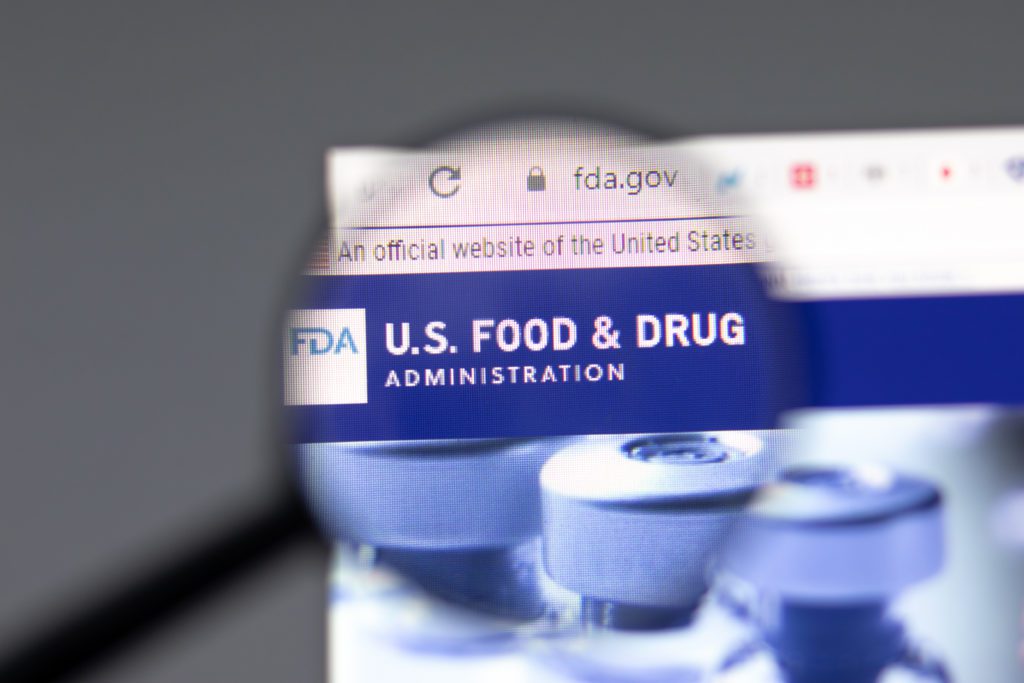House of Cards
- Harm Reduction This Issue
- February 21, 2023
- 15 minutes read

Credit: Nakul

If you improve the way that you implement bad policies, you are still left with bad policies.
By George Gay
Yet another report has demonstrated that the quest to encourage cigarette smokers to switch to the consumption of less risky tobacco and nicotine products is being subsumed under what now seems to be seen as the loftier aim of counting how many anti-tobacco policies and strategies can dance on the head of a pin. Constantinople is under attack.
The report, Operational Evaluation of Certain Components of FDA’s Tobacco Program, was drawn up by an Independent Expert Panel convened by the Reagan-Udall Foundation at the request, in July, of U.S. Food and Drug Administration Commissioner Robert Califf.
I should point out, however, that the direction the report took was not due to some gratuitous decision on the part of those serving on the panel but was rather determined by the terms of reference they were given. According to the report, issued in December, the panel members were charged with conducting “an evaluation of the FDA Center for Tobacco Products (CTP) with the aim of addressing immediate issues and providing recommendations to position the center for greater success in the future.”
But the key to the direction the panel took was provided in the following sentence. “This report focuses on operational issues; it does not address tobacco policy.”
In other words (my words), the panel members were given the task of addressing the symptoms afflicting the CTP, not the causes of its malaise. Their task resembled that undertaken by engineers charged with halting or slowing the collapse of the Leaning Tower of Pisa. Theirs was not to ask whether the tottering tower was fit for purpose. Theirs was to underpin the edifice.
Of course, there was a major difference between the engineers working beneath the tower and the academics working to prop up the CTP. The former had the joy of working on a beautiful, if foundationally flawed, Romanesque campanile that each year attracts countless tourists. All panel members had to work on, however, was the CTP edifice, whose superadditions rival those of a Gaudi building while lacking the charm or joie de vivre.
But I have digressed and, in doing so, skipped over something mentioned above that might have puzzled—even angered—some readers. I can assure you, however, that I detected no implied irony in the statement that the aim of the report should be, in part, to provide “recommendations to position the center for greater success [my emphasis] in the future.”
Indeed, the report says that, since its creation in 2009, the CTP has accomplished a great deal. “Between 2009 and 2022,” it says, “CTP published 16 proposed rules, 16 final rules, 35 draft guidances and 50 final Level 1 guidances.” And the report continues in that vein, listing such things as the number of applications the CTP has dealt with, the manufacturing and retail inspections it has carried out, the number of warning letters it has sent out and the amount of money it has collected from retailers in civil monetary penalties.
There are two things that strike me about this. The first is that it seems as though the tasks listed as having been carried out are merely part of the job description and therefore hardly worthy of remark.
The other point is more important, I think. There was no mention within the paragraph on CTP achievements as to how many smokers the center estimates it has encouraged to quit their habit or how many it has encouraged to move, either partially or wholly, to less risky tobacco and nicotine products.

This is significant because the CTP’s stated mission is to protect people in the U.S. from tobacco-related disease and death, and you’re a million miles from the coalface of such an undertaking if you’re sitting in your office sending out warning letters to retailers. In fact, we seem to be talking mission impossible. “The lack of clarity about CTP’s direction, its priorities and its near-term and longer-term goals and objectives hinders CTP’s ability to effectively carry out its mission,” the report says.
Indeed, far from mission-judged achievements, the report is clear that things are not going well. “Tobacco is the leading preventable cause of death in the U.S., with cigarette smoking accounting for more than 480,000 deaths annually, according to the Centers for Disease Control and Prevention (CDC),” the report says. “Despite efforts to curb tobacco use, the smoking epidemic continues to contribute to an enormous, avoidable public health catastrophe.”
And the report then goes on to provide some statistics on smoking and vaping and their outcomes in respect of U.S. adults and young people. With the exception of the references to vaping, that same summation, including the huge death toll, could have been made before the formation of the CTP. It would seem that no progress has been made.
On the other hand, the report seems very good given the limits of the panel’s mandate, which saw it address four CTP program areas: regulations and guidance, application review, compliance and enforcement, and communication with the public and other stakeholders. As far as I am able to judge and given the time restraints involved, the panel members seem to have consulted widely, summed up the situation well and presented a host of necessary recommendations to improve the performance of the CTP.
I would worry, however, that in trying to implement the recommendations, the CTP would simply take on more work at a time when it is said to be overworked and almost overwhelmed to the point of being regularly reactive rather than proactive. Whereas the recommendations, if implemented, would no doubt be timesaving in the long run, it is difficult to see how the CTP can put those recommendations into place in the short term without additional resources, which we are told are in short supply.
Surely, the only way out of this vicious circle is to go back to basics and trim the policies to the resources available. This would be no bad thing in any case. The level of complexity of the CTP’s proffered solution to the problem of tobacco consumption is out of all proportion to the problem, or how do we put it now? The “challenge,” or, more recently, the “solution opportunity.” Concentrating on operational aspects means that the CTP, having lost sight of its objectives, is going to redouble its efforts.
While the panel was robust but diplomatic in its presentation, the report will not have made easy reading for those at the top of the CTP. Reading between the lines, I came away with the impression that the performance of the center has been unnecessarily bureaucratic, confused on the question of the interaction between science and policy, verging on the chaotic and, in large part, ineffective. But, in fairness, I must say that this was broadly my opinion before I read the report, so I cannot claim that my reading was impartial.
In what I thought was the most important aspect of the report, the panel addressed the tricky issue of science and how it informs the CTP’s work. The report notes that some issues before the CTP were fundamental policy questions that had to be informed by science but were not, themselves, scientific issues. “Rather, they are policy issues with profound societal impacts,” the report said.
And then it went on to make what is a vital point about an issue that, to my way of thinking, has tripped the CTP up on its mission path. One such question that scientific analysis alone would not resolve, the report said, was how to weigh the public health benefits achieved through smokers using electronic nicotine-delivery systems (ENDS) to completely quit smoking combustible tobacco products against the public health harms that might occur if young people used ENDS and thereby acquired a lifelong addiction to nicotine or proceeded to use combustible tobacco products,
Again, in fairness, I don’t believe that all the problems that have beset the CTP since it was set up as part of the FDA following the passing in 2009 of the Tobacco Control Act can be laid solely at the door of the center. The decision to hand to the FDA responsibility for the oversight of products whose consumption was known to be risky was fraught, especially given the tendency of politicians to use tobacco as a way of burnishing their often tarnished credentials in the eyes of populations made up overwhelmingly of people who do not use tobacco products. Putting the boot into smokers is generally a vote winner.
The CTP has been confronted, too, with legal challenges, but here it must be prepared to take a large part of the blame because important aspects of what it has done have been characterized by a lack of consistency. The report is awash with stakeholder comments about a lack of clarity, transparency and communication regarding its priorities and its decision-making processes.
Application processes were said by stakeholders to be extremely cumbersome and time-consuming, with submission requirements vague, frequently changing and favoring established companies. Application reviews were said to be inefficient and unpredictable, which is unsurprising given that FDA employees described the past several years of application review programs as full of ad hoc troubleshooting and abrupt shifts in direction.
 What will have particularly exercised the minds of most of the readers of this magazine are those sections that deal with tobacco harm reduction issues, though much of what was said will have been widely known. At one point, the report notes that the agency announced its intention to apply a harm reduction strategy designed to move tobacco product consumers down the continuum of risk: switching from using combustible tobacco products to noncombustible products.
What will have particularly exercised the minds of most of the readers of this magazine are those sections that deal with tobacco harm reduction issues, though much of what was said will have been widely known. At one point, the report notes that the agency announced its intention to apply a harm reduction strategy designed to move tobacco product consumers down the continuum of risk: switching from using combustible tobacco products to noncombustible products.
“However, stakeholders observed the agency’s more recent marketing authorization decisions appear to reflect a policy shift—specifically a reluctance to authorize any … ENDS other than those that are tobacco flavored,” the report notes. “If such a policy shift occurred, the agency did not specifically announce it in a regulation or guidance, leaving stakeholders to glean it from documents posted on FDA’s website such as a Technical Project Lead (TPL) review of PMTAs [premarket tobacco product applications], MDOs [marketing denial orders] posted in abbreviated form, or from heavily redacted documents provided in response to Freedom of Information Act (FOIA) requests.”
There are two main points in the report with which I would take issue. My main gripe concerns the following sentence. “Although CTP has a critical mission to protect the public health from tobacco-related disease and death and is regulating products that have no inherent benefit and huge societal costs, it is a government regulatory program with a duty to run efficiently, fairly and transparently.”
“No inherent benefit”? Unless I am misunderstanding what is being said here, and I hope that is the case, I have to ask how such a distinguished panel can have arrived at this idea. How can the panel say that a product consumed by, we are told, more than 30 million people in the U.S., often at great financial sacrifice, has no inherent value? Is the panel saying that these people have no agency—are zombie consumers?
The other issue has to do with enforcement of the various rules laid down by the CTP, which were seen by some CTP staff and stakeholders as being cumbersome. There seemed to be a suggestion that a task force should be formed of half a dozen or so agencies, including the Bureau of Alcohol, Tobacco, Firearms and Explosives, and the Department of Homeland Security.
Wouldn’t this be somewhat heavy handed? Whenever such issues arise, surely it is incumbent upon us to take a step back and ask, is enforcement really the problem? Is it time to increase penalties as some apparently suggest, or is it time to say that perhaps the rules are the problem? And, in this case, it seems to me that the rules are the problem, or rather that the problems arise because the rules are changed without warning and are therefore difficult to follow.
Overall, given such circumstances, I cannot see how this report will help smokers, even indirectly. The problem lies in the CTP’s policies. If you improve the way that you implement bad policies, you are still left with bad policies.

